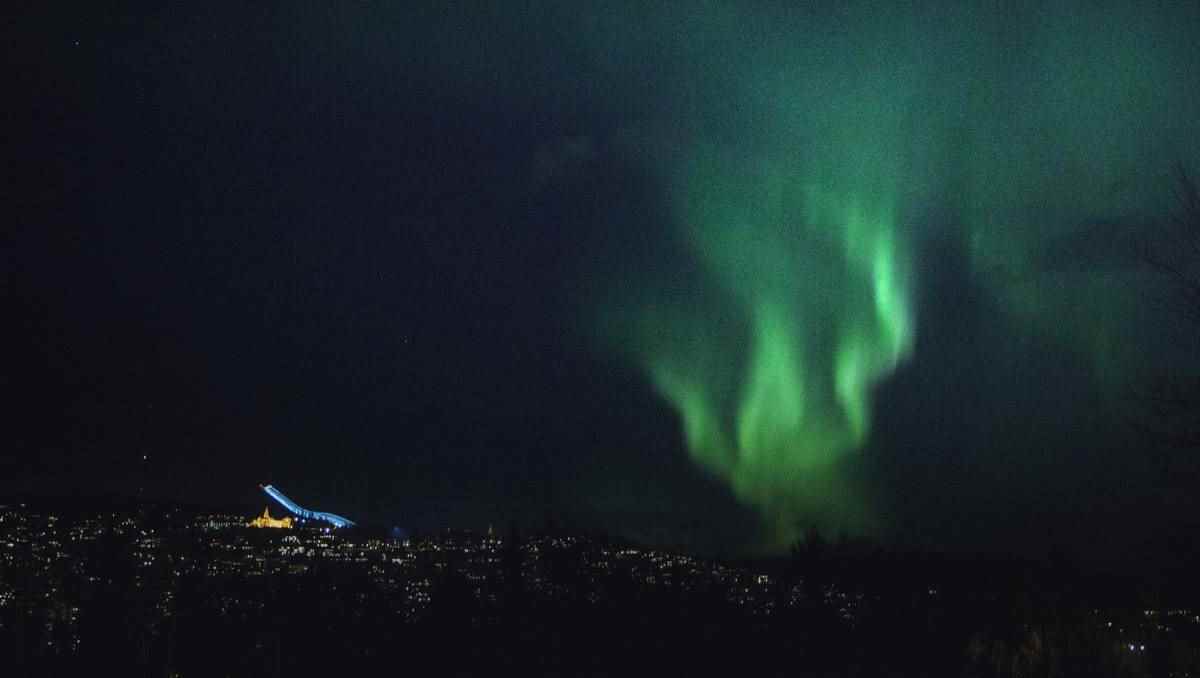While northerners are used to being served northern lights on silver platters throughout the autumn and winter, the opportunities are rarer in the south. But this weekend the whole of Norway can catch a glimpse. Then there is an equally high probability of northern lights in Oslo as there is in Tromsø. Whether the northern lights are visible depends on the so-called KP index, which ranges from 0–9. A value of 0 means low activity, while 9 means that an intense geomagnetic solar storm is underway. This week, a number of websites are announcing that the index will be at 5 and 6 across the country. – There is a high KP value this weekend and good opportunities, confirms meteorologist Eldbjørg Moxnes at MET. meteorologist Eldbjørg Moxnes at the Meteorological Institute. Photo: Privat She explains that the Northern Lights activity goes in cycles. – Now there is a cycle of 27 days, so the northern lights often return after such a cycle. For example, if the northern lights are to be visible from Kristiansand, the KP value must be at least 5. In Oslo it must be 4, while in Tromsø it can be as low as 0. This means that the northern lights will almost always be visible when first is there. At the mercy of the weather But if you want to catch a glimpse of the northern lights, the weather must help to facilitate it. And the possibilities will be varied depending on where in the country you live. Although the northern lights forecast is just as good in the south as in the north, ironically it is the northerners who have the best chance. – The best opportunities will probably be in the north as it looks now. It is a bit unfortunate that it will be cloudy until Saturday night in the south. A front is coming in from the west, she says. But on the night of Sunday there may be cracks in the cloud cover. Then there will be hope for some. – There is some uncertainty connected to Sunday for the time being. There is a slightly lighter cloud cover during the night to Sunday, which gives opportunities in Southern Norway, in Telemark and perhaps partly in Buskerud. Perhaps a small opportunity in Møre and Romsdal as well, as it looks now. But on Sunday, the clouds will probably return. Unfortunate for southern Norway. But it is important to emphasize that the notice may change. – The cloud cover forecast is relatively uncertain several days ahead. Hope is probably not completely lost, here you just have to keep an eye on it in the short term, says Moxnes. – Not completely impossible, but you have to follow along to make it happen. Solar activity determines the Northern Lights occur when particles from the sun hit the earth’s atmosphere. Sometimes there can be storms or gas explosions on the sun, which cause extra particles to be sent in our direction. Sometimes it even causes the northern lights to spread far south in Europe. A gas eruption on the sun on 8 January 2021 led to a fantastic aurora over Norway a few days later. On the left we see the eruption of the sun. On the right we see the same eruption seen from the SOHO satellite, which recently turned 25 years old. ILLUSTRATION: NOAA (tv) and ESA/NASA/SOHO/LASCO (th) news reported earlier this year that we are now entering a period where we can expect more northern lights. This is because the sun is entering a more active time, after having “relaxed” for a few years. – The sun has been more active than the models would indicate. In the past year, the sun has been far above what has been estimated, Pål Brekke, Head of Department at the Norwegian Space Center has previously stated. The peak of activity is expected to be reached in 2025. The science behind the northern lights Northern Lights, or Aurora Borealis as it is called in Latin, occurs when particles from the sun hit the earth’s atmosphere Active northern lights phenomena are dependent on the activity on the sun. The sun throws out huge gas clouds (solar winds) of varying strength, and sometimes there are storms. Strong activity on the sun can give rise to very strong northern lights three to four days afterwards. The Earth is surrounded by a magnetic field – the magnetosphere – which protects against many of the high-energy particles. But some particles thus get through the protective shield, and give rise to the aurora borealis. Source: forskning.no
ttn-69
May become northern lights in Oslo, Bergen, Trondheim and Kristiansand – news Troms and Finnmark

